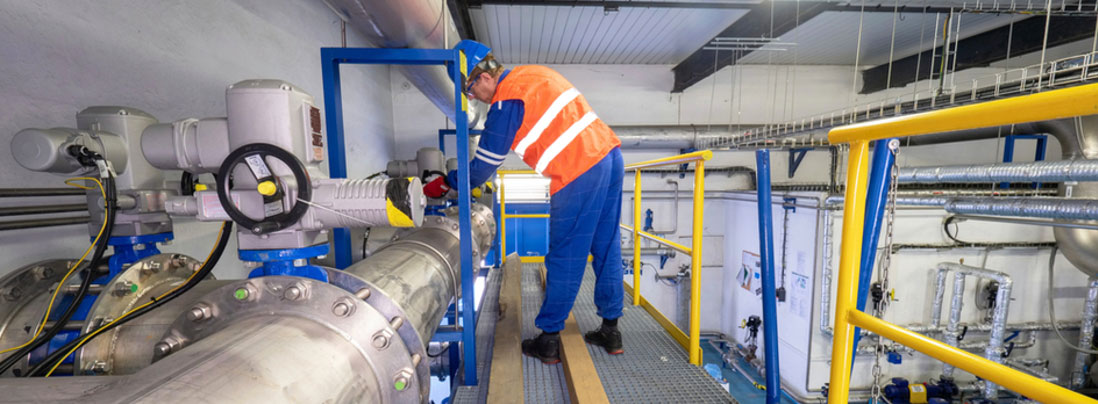Offshore Oil & Gas, Uncategorized
The Rising Need of Siloxane Removal Systems for Biogas Cleaning
June 25, 2021 Welcome

Biogas is a renewable energy source suitable for powering combustion engines, hence cutting down the need for coal, crude oil, and natural gas. Operators harvest it from liquid and solid waste streams, which are increasingly composed of siloxanes found in many industrial and household products. Engine manufacturers require maximum siloxane concentration in biogas to ensure efficient engine operation. In this article, we will explore the various biogas cleaning technologies for optimum siloxane removal.
What are Siloxanes?
Silicon, oxygen, and alkane make up the word “siloxane.” As a family of organic compounds, Siloxanes are composed of linear or cyclic chains of silicon, oxygen, and methyl groups. They occur in a range of industrial and residential products, including water repellents, deodorants, cosmetics, food additives, toothpaste, windshield coatings, and biogas. Since biogas is produced from solid and liquid environmental waste, siloxanes are one of its major pollutants, causing several issues in its utilization. Although they are manmade, Siloxanes must be effectively removed from biogas to ensure durable and cost-effective biogas utilization.
Sources of Siloxanes
Biogas can be produced from uncontrolled and controlled systems. Uncontrolled systems include landfills and marshlands, while controlled systems include wastewater treatment plants (WWTP) and anaerobic digestion plants. These biogas sources have high siloxane contamination, resulting from waste from industries and households.
With landfill biogas, siloxane contamination results from high levels of organosilicon-containing wastes that are deposited in landfills through garbage collection. These wastes include paper coatings, textiles, cleaners, cosmetics, and deodorant containers. It’s important to note that landfill siloxane concentration differs from landfill biogas siloxane concentration because of climate conditions and landfill age, amongst other factors.
Silicon-containing substances are present in personal care products like aftershaves, creams, etc. These are principal sources of siloxane to wastewater, which are then channeled to the controlled systems. These systems have a higher siloxane concentration in anaerobic digestion plants biogas than in WWTPs biogas. Resulting from the strong hydrophobicity of siloxanes, extracellular polymeric substances (EPS) adsorb most of them in WWTPs, losing the rest to the atmosphere via volatilization. More siloxane content is present in biogas manufactured from the anaerobic digestion process.
Effects of Siloxanes in Biogas
Biogas serves as a fuel for engines, fuel cells, boilers, turbines, etc. They can cause adverse effects to these types of machinery if they contain a high concentration of siloxanes. Siloxane molecules break down into silicon and oxygen during combustion, which combines with additional elements to form silica, silicates, and other problematic compounds. These compounds settle in the combustion chamber, valve faces, and cylinder heads, causing various forms of wear and tear of these engine parts. The maximum permissible silicone concentration for engines is 5mg/Nm3. Biogas with high silicone concentrations can cause severe damage to biogas turbines and high maintenance costs.
Purpose of Removing Siloxane from Biogas
Siloxane removal from biogas is crucial for the consistent efficiency of regularly used machinery. Engine designers and manufacturers require a certain siloxane concentration limit in biogas to ensure hitch-free engine operations. Here are a few reasons you must remove siloxane from biogas:
- To ensure equipment and machines are operated optimally.
- To foster the longevity of machines used for compression, extraction, and transportation.
- To improve exhaust gas emissions from energy-producing machines.
- To promote cost-effective biogas utilization by reducing machine maintenance costs.
Siloxane Removal Methods
Each biogas plant comprises the production, collection, cleaning, and recovery stages. The biogas cleaning stage uses one or more of the following siloxane removal methods to ensure an industrially and commercially acceptable biogas:
- Activated Carbon
- Activated Alumina
- Condensation
- Liquid Absorbents
- Membrane Technology
- Synthetic Resins
Activated Carbon
Because of its adsorbent qualities and large surface area, biogas plant operators use activated carbon to remove organic substances from gases and liquid. Siloxanes are no exception. The siloxane removal system packs polymorphous porous graphite, a high-quality activated carbon, into a series of adsorber vessels to remove siloxanes from the biogas.
Activated Alumina
Here, plant operators pass biogas through activated alumina beds. The beds serve as siloxane filters, leaving the biogas siloxane-free. However, these beds become saturated and must be regenerated, often by flowing a regeneration gas through them.
Condensation
This biogas cleaning process preferentially removes specific compounds from the biogas. As operators lower the temperature or pressure of the biogas by refrigeration or depressurization, impure compounds, including siloxane, condense into liquid phase depending on their dew points. By settling out, they can be adequately extracted.
Liquid Absorbents
Landfill operators use liquid absorbents to remove siloxane from biogas. These chemicals effectively remove siloxane and other biogas impurities like H2S, COS, CO2, and mercaptans. Operators sometimes combine them with other siloxane removal methods to achieve high levels of biogas purity.
Membrane Technology
Recently, biogas plant operators have widely used membrane technology to effectively and efficiently remove siloxanes. Its working principle includes the passing of biogas through several consecutive porous polymeric membranes to sieve out unwanted compounds, including siloxanes. The resulting biogas has high levels of purity since the membranes allow the contaminants to permeate, leaving the gas. Although it is highly efficient, this technology faces the challenge of acid deterioration of the membranes from the biogas acid content.
Synthetic Resins
Synthetic resins, like activated carbon and alumina, can adsorb siloxanes from biogas. Because of their high surface area density, they can also remove specific classes of compounds depending on their design.
IFS Can Help Your Company Remove Siloxanes From Biogas
At IFS, we offer a wide range of high-quality industrial solutions. Our excellent Siloxane removal services guarantee you optimized biogas processes. Contact us online today!

